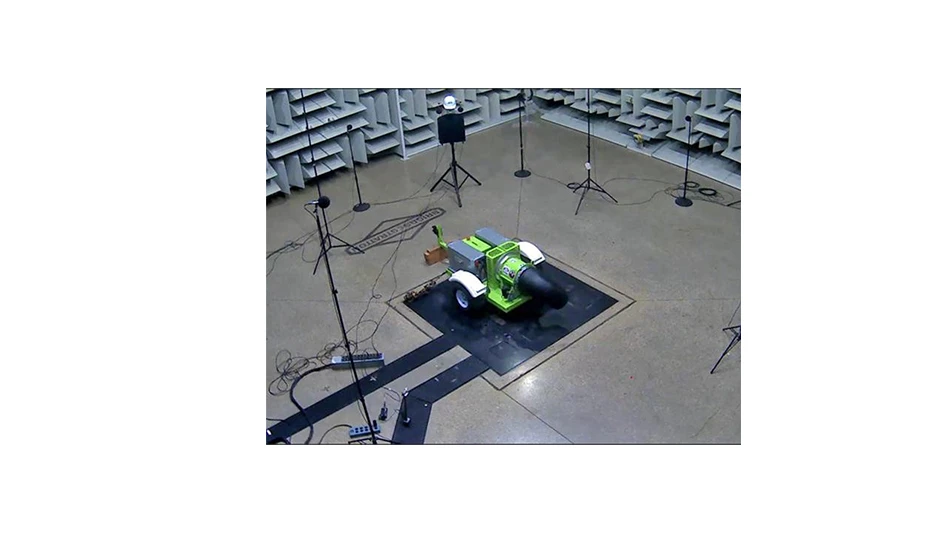 It’s been a brutally cold and snowy winter, with most areas of the country seeing temperature records shattered like falling icicles. Ohio, for example, had more sub-zero days in January than in any month in the past 20 years.
It’s been a brutally cold and snowy winter, with most areas of the country seeing temperature records shattered like falling icicles. Ohio, for example, had more sub-zero days in January than in any month in the past 20 years.
So, what does this mean for dollar spot pressure in the spring? Not much, says Jim Kerns, assistant professor and extension specialist for turfgrass pathology at North Carolina State University. Kerns experienced the pathogen’s hardiness firsthand during his time at the University of Wisconsin, where he studied dollar spot’s overwintering.
In his studies, Kerns found that “while it did seem to show that winter temperatures have an association with winter survival, it does seem the organism can survive pretty well over winter, even with subzero temperatures.”
Kerns believes that winter isn’t the best judge of how pathogens work in different seasons because these fungi are capable of surviving in different climates.
“Certainly, this winter will have some sort of effect, but I think that effect is going to be mild in the eyes of the practitioner,” he says
In other words, it won’t save any superintendents from using fungicide applications or changing their management practices.
“[The winter] may not back some of the survival of the organism, but once it gets going, you see an initial lag, then it grows exponentially if the environment is correct,” says Kerns.
 One of the reasons Kerns is leery of winter lessening the impact of dollar spot is that he has stored these fungi at -80 Celsius and still was able to pull them back out, plate them, and watch them grow just fine.
One of the reasons Kerns is leery of winter lessening the impact of dollar spot is that he has stored these fungi at -80 Celsius and still was able to pull them back out, plate them, and watch them grow just fine.
“They have a mechanism to withstand cold temperatures well,” he says. “They may not be actively growing, but they can withstand extremely cold temperatures for long periods of time.”
Based on work he has done in trying to forecast development of dollar spot, Kerns advises superintendents to consider their first dollar spot application when temperatures over 50 degrees Fahrenheit coincide with relative humidity above 70 percent for at least five days.
“That could vary this spring, but not necessarily as a result of winter,” says Kerns. “That’s just whatever spring we’re dealt this year. Looking at winter as a predictor for spring and summer – and I know a lot of people are thinking about this – I’ve never found it as a good prediction of what happens in spring.”
According to Kerns, the disease is most severe when relative humidity reach 85 percent and above. Typically, the disease is not problematic when temperatures are 90 degrees Fahrenheit and above, but it still can cause disease at higher temperatures if relative humidity remains high.
Kerns’ other piece of standard advice is to always plan for the norm.
“Don’t assume based on fall conditions or winter conditions that your dollar spot application will be any different than last year,” he says. “Typically, if you’ve had great control in years past, you’ll most likely get great control in 2014 and years on. For courses that have struggled, it’s time to re-evaluate what fungicides they’re using in combination with cultural management.”
Kerns uses last summer as an example. It was a banner year for dollar spot because most of the country stayed pretty wet most of the year and didn’t get too hot in most areas.
|
Contact vs. Systemic Fungicides can be broken down into two groups: contact fungicides and systemic fungicides. According to Rob Golembiewski, Ph.D., member of Bayer Environmental Science’s technical service team for turf and ornamentals, contact fungicides are applied to the plant surface and prevent fungus from developing on the leaf surface. “It more or less inhibits the growth and development of the disease itself,” says Golembiewski. Systemic fungicides are generally taken up by the plant itself. Because of this, there is usually longer residual activity, around 14 to 28 days of control versus 7 to 14 with contact fungicides. The biggest class of fungicides, says Golembiewski, is the DMIs. Within this class are six different products: Bayleton, Banner Maxx, Tourney, Torque, Trinity, Triton FLO and a new product from Bayer coming out in the spring called Mirage. “The group most widely used in early season applications is DMIs,” Golembiewski says. “When you get into the in-season, because of the higher temperatures guys look at contacts or non-DMI chemistry.” At the end of the day, Golembiewski says, it’s a good thing that the market has such a wide variety of products. “When you look at the amount of products and chemistries available, it’s really nice as far as with dollar spot because you do have the opportunity to look at more of a solutions approach,” he says. “It would be great if we were just dealing with dollar spot, but on a golf course, we all realize you’re dealing with multiple diseases depending on what part of the country you’re in. So you want to think about a different approach when it comes to dollar spot, anthracnose, brown patch or summer patch and start utilizing fungicides to target multiple diseases.” |
Likewise, North Carolina rarely has dollar spot in July and August, yet it had it all summer long.
“So if people did well last year with their dollar spot program, they’ll likely do well this year,” he concludes.
“What this year’s pressure will be based on is what spring and summer holds. That’s the main thing,” Kerns adds. “Depending on spring, it certainly could be later or may not be as severe initially, but again it’s difficult to predict based on winter temperatures.”
Rob Golembiewski, Ph.D., member of Bayer Environmental Science’s technical service team for turf and ornamentals, predicts no significant change as well in dollar spot pressure this spring.
“If anything, a milder winter would probably be more conducive to seeing activity earlier in spring,” he says. “But the turfgrass went dormant in fall and we have had ample snow cover for the most part that has acted as an insulation blanket. So even with these extreme cold temperatures, the turf really hasn’t been impacted that much.”
Research coming out of Ohio State University suggests applying a DMI fungicide after the second true mowing of the year can delay the onset of dollar spot anywhere from 8 to 12 weeks into early summer. Bayer has an additional recommendation, Golembiewski says, based on its “total solution” approach.
“A lot of superintendents treat for fairy ring and waitea patch in that 55- to 60-degree soil temperature range at a 2-inch depth. Generally we’re recommending a DMI for those diseases, so if you’re treating for fairy ring or waitea patch with a DMI, you’re likely to get dollar spot control as well. You’re really targeting multiple diseases with that early spring application.”
Golembiewski advises that, instead of relying on calendar dates or time periods, superintendents should look at predictive models and evaluate environmental conditions.
“You really should be looking at soil temperatures and growing degree day models and environmental conditions as guides versus a calendar-based approach, and I think most superintendents are doing that,” Golembiewski says.
“Using those predictive models, we see a lot of folks targeting that early season application to get that eight- to 12-week delay as far as the onset of dollar spot – but also targeting multiple diseases in that time period,” he adds.
| Expert advice For more information on dollar spot and the issues related to managing and treating for this turf pathogen, check out the following articles. To access the content, just enter the following link into your browser. A New Look at a Costly Problem Research on fungicide resistance in dollar spot. By Joseph Roberts bit.ly/1bNama6 Dollar Spot Control Treatment of this disease in creeping bentgrass fairway turf as influenced by fungicide spray volume and application timing. By Steven J. McDonald, Peter H. Dernoeden, and Cale A. Bigelow bit.ly/1aVytbx |
Jason Stahl is a Cleveland-based writer and frequent GCI contributor.
Have a listen…
Want more information about dollar spot? Check out this podcast from Dr. Karl Danneberger, professor at The Ohio State University. In the podcast, Danneberger shares the warning signs for dollar spot and how superintendents can identify it on their courses. Just enter bit.ly/NCVdDd into your web browser.

Explore the March 2014 Issue
Check out more from this issue and find your next story to read.
Latest from Golf Course Industry
- Bloom Golf Partners adds HR expert
- Seeking sustainability in Vietnam
- Kerns featured in Envu root diseases webinar
- Toro continues support of National Mayor’s Challenge for Water Conservation
- A different kind of long distance
- Golf Construction Conversations: Stephen Hope
- EnP welcomes new sales manager
- DLF opening centers in Oregon, Ontario





